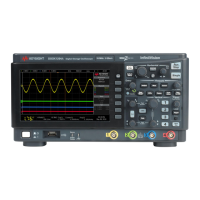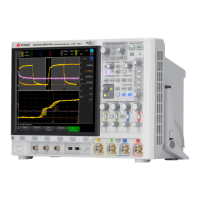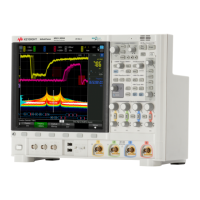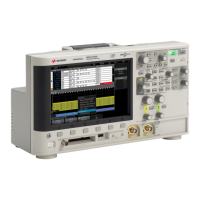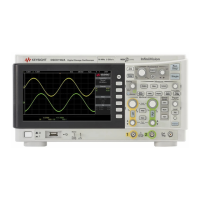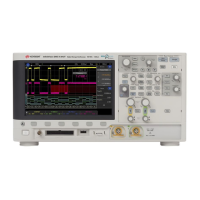598 Keysight InfiniiVision DSOX1204A/G Oscilloscopes Programmer's Guide
27 :TRIGger Commands
:TRIGger[:EDGE]:COUPling
(see page 798)
Command Syntax
:TRIGger[:EDGE]:COUPling <coupling>
<coupling> ::= {AC | DC | LFReject}
The :TRIGger[:EDGE]:COUPling command sets the input coupling for the selected
trigger sources. The coupling can be set to AC, DC, or LFReject.
• AC coupling places a high-pass filter (10 Hz for analog channels, and 3.5 Hz for
all External trigger inputs) in the trigger path, removing dc offset voltage from
the trigger waveform. Use AC coupling to get a stable edge trigger when your
waveform has a large dc offset.
• LFReject coupling places a 50 KHz high-pass filter in the trigger path.
• DC coupling allows dc and ac signals into the trigger path.
Query Syntax
:TRIGger[:EDGE]:COUPling?
The :TRIGger[:EDGE]:COUPling? query returns the current coupling selection.
Return Format
<coupling><NL>
<coupling> ::= {AC | DC | LFR}
See Also • "Introduction to :TRIGger Commands" on page 585
• ":TRIGger:MODE" on page 594
• ":TRIGger[:EDGE]:REJect" on page 600
The :TRIGger[:EDGE]:COUPling and the :TRIGger[:EDGE]:REJect selections are coupled.
Changing the setting of the :TRIGger[:EDGE]:REJect can change the COUPling setting.

